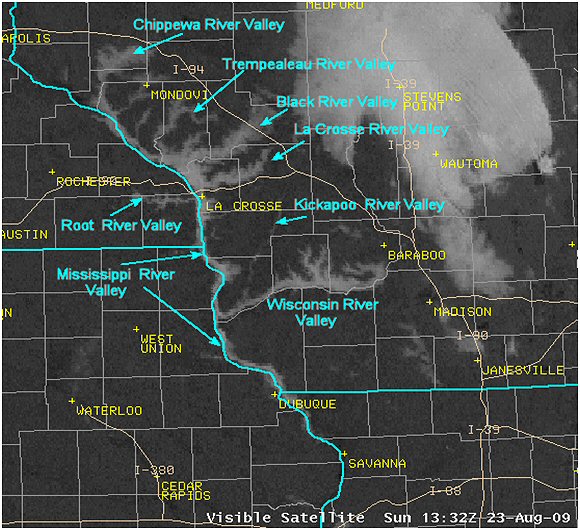
A winter-like pattern will continue over much of the Lower 48 over the next few days, with snow stretching from the Rockies today into the Middle Mississippi Valley on Monday. Showers and thunderstorms will develop along the Gulf Coast and Southeast on Monday. As the storm moves northward late Monday into Tuesday, winter weather is possible from the Central Appalachians to Interior New England. Read More >
Fog in the river valleys is a common occurence across the region, but moreso during the late summer and fall months. Nights get longer, temperatures get cooler, and warm rivers exchange some moisture with the colder air right above it. The fog can be spectacular when viewed from above as fog "fills" the valleys while ridge-tops remain clear and sunny. These higher points will stick out like islands in this sea of white fog.
The recipe for a widespread valley fog event, or one that spreads the fog into even the most subtle river valleys, consists of:
Below is a satellite picture of the region taken at 7:32 am August 23rd, 2009. Note the fog (the brighter grey) had developed into the tributaries of the Wisconsin and Mississippi River Valleys. This gives the fog a "vein"-like appearance from the satellite perspective. A large fog bank was located over central Wisconsin from Medford to Wautoma, and southeast toward Madison.

Below is a time lapse animated image from a fog event in September of 2009, showing just how quickly valley fog can dissipate. The time span is only 1 hour. Click image to make larger.